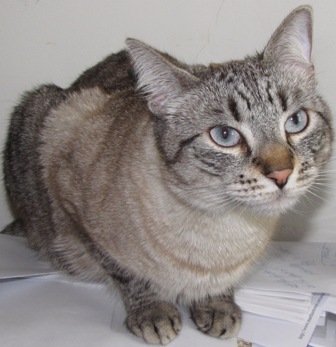I have lately been neglecting my blog and not answering e-mails and comments, for which I deeply apologize. I have been very busy in this period, but things should return to normal (?) within a few days.
As I was looking online for the BBC’s 2009 April Fools’ hoax this morning (no news as of yet), I read an interesting item that I thought I would pass along: http://news.bbc.co.uk/2/hi/health/7973678.stm It talks about a new study that has linked childhood leukemia to infections. Interesting read. And it gave me some food for thought.
As I think I have written here on previous occasions, I was diagnosed with MGUS only a few years after I was infected with EBV (=Epstein-Barr virus). I was quite ill for a month or so…I was in grad school in Canada at the time. Anyway, in recent years, after reading about other folks who came down with similar infections before being diagnosed with myeloma or MGUS, I have wondered if EBV could possibly have been one of the causes of my current state of smoldering myeloma. Of course, I am hardly a child…! Well, it’s just a thought. Who knows…
At any rate, let me wish you all a Happy April Fools’ Day! Here follow some well-known pranks that I found on Wikipedia, hehe:
-
The BBC television programme Panorama ran a famous hoax in 1957, showing the Swiss harvesting spaghetti from trees. They had claimed that the despised pest, the spaghetti weevil, had been eradicated. A large number of people contacted the BBC wanting to know how to cultivate their own spaghetti trees. It was, in fact, filmed in St Albans.
-
Left Handed Whoppers: In 1998, Burger King ran an ad in USA Today, saying that people could get a Whopper for left-handed people whose condiments were designed to drip out of the right side. Not only did customers order the new burgers, but some specifically requested the “old”, right-handed burger.
-
Taco Liberty Bell: In 1996, Taco Bell took out a full-page advertisement in The New York Times announcing that they had purchased the Liberty Bell to “reduce the country’s debt” and renamed it the “Taco Liberty Bell.” When asked about the sale, White House press secretary Mike McCurry replied tongue-in-cheek that the Lincoln Memorial had also been sold and would henceforth be known as the Lincoln Mercury Memorial.
-
San Serriffe: The Guardian printed a supplement in 1977 praising this fictional resort, its two main islands (Upper Caisse and Lower Caisse), its capital (Bodoni), and its leader (General Pica). Intrigued readers were later disappointed to learn that San Serriffe (sans serif) did not exist except as references to typeface terminology. (This comes from a Jorge Luis Borges story.)
-
Smell-o-vision: In 1965, the BBC purported to conduct a trial of a new technology allowing the transmission of odor over the airwaves to all viewers. Many viewers reportedly contacted the BBC to report the trial’s success. In 2007, the BBC website repeated an online version of the hoax.
-
Tower of Pisa: The Dutch television news reported once in the 1950s that the Tower of Pisa had fallen over. Many shocked people contacted the station.
 I have been very busy this week…extra work (translations, mainly) and whatnot. No time to do any serious research/reading. Or answer any messages (sorry about that!).
I have been very busy this week…extra work (translations, mainly) and whatnot. No time to do any serious research/reading. Or answer any messages (sorry about that!).